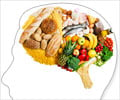
‘Participants who used paper completed the task about 25% faster than those who used digital methods’
Read More..Tweet it Now
In the study, 48 participants aged 18-29 years read a fictional conversation between characters. A pre-test analysis was performed to ensure that the volunteers were categorized into three groups depending on memory skills, personal preference for digital or analog methods, gender, age and other factors. Read More..
Participants were tasked to record the conversation using a paper notebook and pen, a calendar app on a digital tablet and a stylus, or a calendar app on a large smartphone and a touch-screen keyboard.
After one hour (including a break and a task to distract them) participants answered a range of simple and complex multiple choice questions to test their memory of the conversation while in an MRI.
Findings showed that participants who used a paper datebook took around 11 minutes to record the data, while tablet users took 14 minutes and smartphone users took about 16 minutes. Participants who used paper completed the task about 25% faster than those who used digital methods.
Participants who used paper had more brain activity in areas associated with language, imaginary visualization, and in the hippocampus (area for memory and navigation). Researchers explain that hippocampus activation shows that analog methods contain richer spatial details that are recalled and navigated in the mind's eye.
Advertisement
"Digital tools have uniform scrolling up and down and standardized arrangement of text and picture size, like on a webpage. But if you remember a physical textbook printed on paper, you can close your eyes and visualize the photo one-third of the way down on the left-side page, as well as the notes you added in the bottom margin," Sakai explained.
Advertisement
Source-Eurekalert













